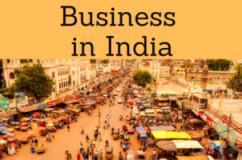ASEAN-India Trade in Goods Agreement

Largest trade agreement of the World: India-ASEAN
- Introduction to the ASEAN-India Trade in Goods Agreement
- Foreign Trade between India and the ASEAN Countries

The Subject “ASEAN-India Trade in Goods Agreement” belongs to the following Online Programs taught by EENI Global Business School:
Course: Hinduism and Business.
Bhagavad Gita Courses: Karma Yoga, Bhakti Yoga, Jnana Yoga, Dhyana Yoga, Realization of the Gita
Masters: International Business, Foreign Trade.
Languages:  or
or  ASEAN-India
ASEAN-India  ASEAN-Inde
ASEAN-Inde  India.
India.



ASEAN-India Trade in Goods Agreement
The ASEAN and India signed the ASEAN-India Trade in Goods Agreement in 2009 and entered into force in 2010.
The ASEAN-India Trade in Goods Agreement facilitates the path for the creation of one of the largest Free Trade Agreement in the World: a market of near 1.8 billion people with a combined GDP of USD 2.8 trillion.
The ASEAN-India Trade in Products Agreement will provide a tariff liberalization of 90% of export products.
Foreign Trade between India and the ASEAN Countries:
- Bilateral trade ASEAN-India: USD 47 billion
- Exports from the Association of Southeast Asian Nations member economies (Brunei, Myanmar, the Philippines, Singapore, Thailand, Vietnam, Cambodia, Indonesia, Malaysia, and Laos) to India: USD 30 billion (growth of 21%)
- Imports of the ASEAN from India: USD 17 billion (growth of 40%)
- Indian Foreign direct investment inflow to the ASEAN Markets: USD 477 million
The India-ASEAN Agreement belongs to:
Transport Corridors:
(c) EENI Global Business School (1995-2024)
We do not use cookies
Top of this page



